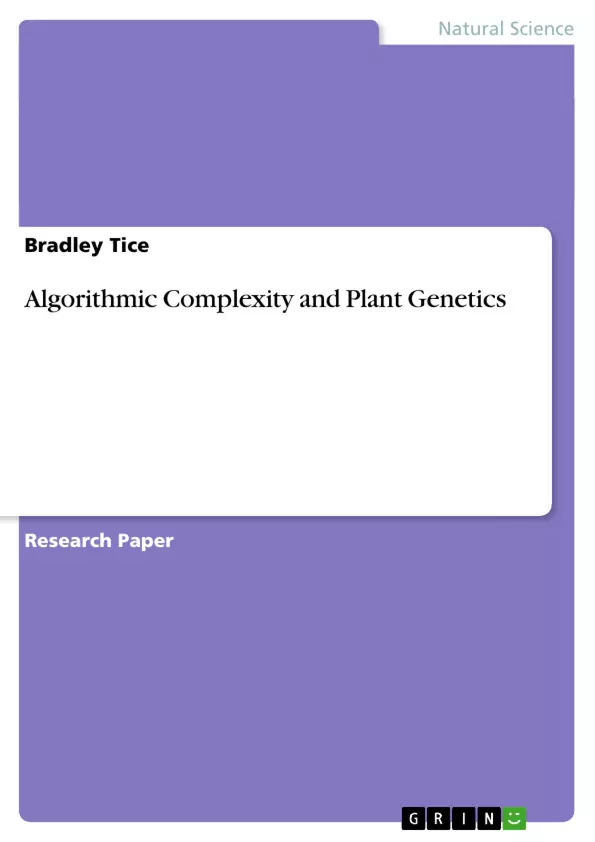A paper presenting an algorithmic compression program for compressing linear sequential data associated with plant genetic polymer chains such as DNA and RNA.
Inhaltsverzeichnis (Table of Contents)
- Introduction
- Compression Algorithm
- A Compression Algorithm: Some Examples
- Big Data
- Plant Genetics
- Algorithmic Compression and Big Data
- Conclusion
- Summary
- References
Zielsetzung und Themenschwerpunkte (Objectives and Key Themes)
This paper explores the potential of an algorithmic compression program for storing and transmitting plant genetic information. It addresses the challenges of handling massive volumes of data, particularly relevant in the fields of plant genetics and Big Data.
- Compression of plant DNA and RNA sequences for efficient storage and transmission.
- The application of a novel compression algorithm to both random and non-random sequential strings.
- The impact of Big Data on plant genetics research and the need for efficient data management.
- The potential of algorithmic compression for addressing the challenges of large data sets in biological sciences.
- The theoretical and practical applications of algorithmic compression to plant genetics, including storage, transmission, and analysis.
Zusammenfassung der Kapitel (Chapter Summaries)
- Introduction: Introduces the paper's objective, presenting an algorithm for compressing sequential strings of plant DNA and RNA. It highlights the significance of compressing plant genetic data for storage and transmission, especially in the context of large data pools and Big Data.
- Compression Algorithm: Explains the algorithmic compression program that works by sub-grouping characters into like-natured sequences, allowing for efficient compression of plant genetic code without losing information. It offers a theoretical framework for understanding the compression process.
- A Compression Algorithm: Some Examples: Provides a practical demonstration of the compression algorithm using binary sequential strings representing plant genetic code. It outlines the process of dividing sequences into random and non-random sub-groups and demonstrates the compression achieved through this method.
- Big Data: Discusses the growing need for efficient data management in biological sciences, particularly concerning plant genetics. It emphasizes the challenges of interpreting and analyzing massive amounts of data, highlighting the urgency for robust storage and transmission solutions.
- Plant Genetics: Addresses the increasing importance of plant genetic research, particularly in the context of developing new food crops and understanding genetic mutations. It highlights the role of genome sequencing in developing genetic roadmaps for improving plant strains.
- Algorithmic Compression and Big Data: Argues for the significance of algorithmic compression in addressing the challenges of Big Data in computational biology. It emphasizes the algorithm's effectiveness in compressing both random and non-random sequences, making it ideal for handling large data pools in plant genetics.
Schlüsselwörter (Keywords)
Algorithmic compression, plant genetics, Big Data, DNA, RNA, sequential strings, biological information, data storage, data transmission, computational biology, bioinformatics.
Excerpt out of 5 pages
- scroll top
- Quote paper
- Professor Bradley Tice (Author), 2014, Algorithmic Complexity and Plant Genetics, Munich, GRIN Verlag, https://www.hausarbeiten.de/document/268096
Look inside the ebook


